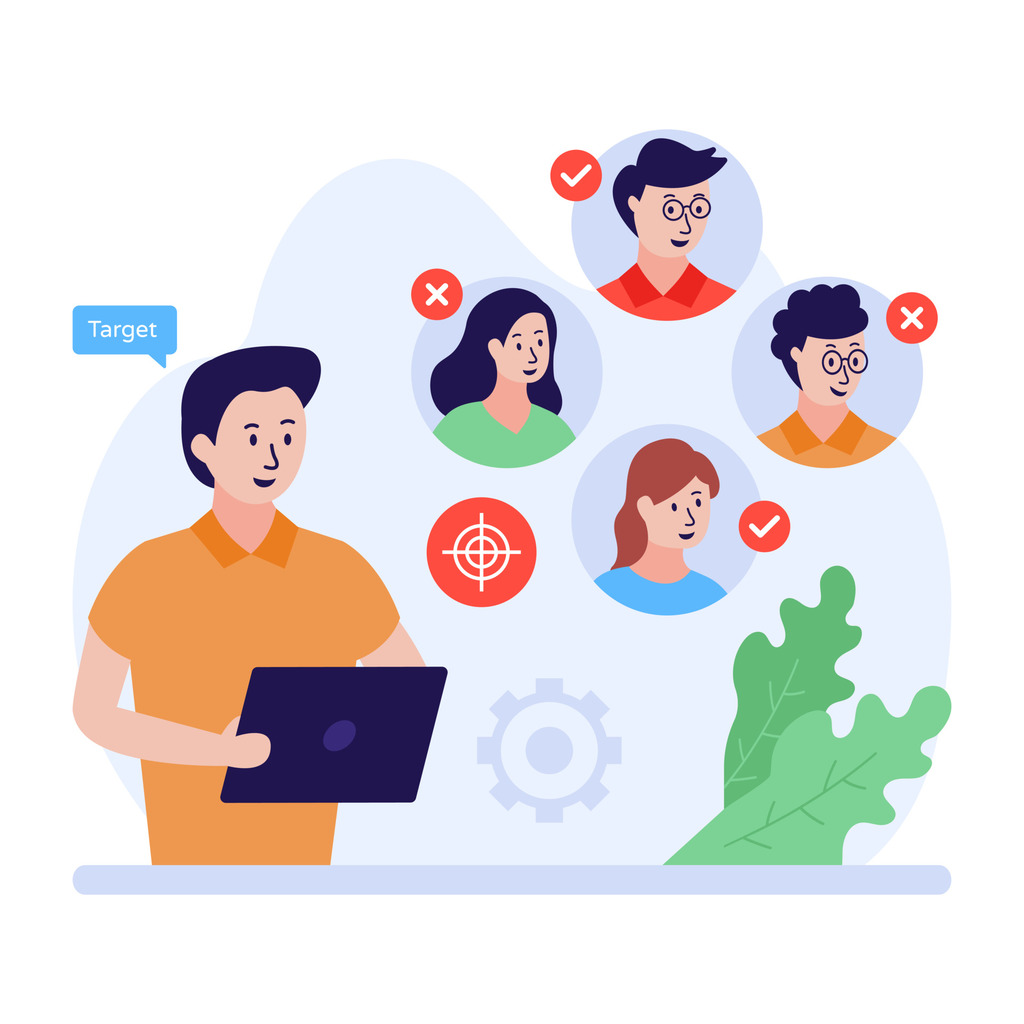Best Customer Segmentation Tools: A Comprehensive Guide

In today’s competitive market, segmentation tools enable personalized outreach that separates thriving brands from those struggling to connect. Research shows businesses prioritizing audience analysis are 60% more likely to identify pain points and 130% better at predicting buyer needs. This strategic approach transforms generic campaigns into precision-targeted efforts that drive measurable results.
Advanced platforms now simplify dividing broad audiences into actionable groups. These systems analyze behaviors, demographics, and engagement patterns to create tailored marketing strategies. Companies using these methods report higher conversion rates and improved loyalty through relevant messaging.
The right analytical framework turns raw data into revenue opportunities. Businesses achieve this by matching specific offerings to distinct audience needs, eliminating wasted ad spend. For example, an e-commerce brand might target frequent buyers differently than first-time visitors—a tactic proven to boost repeat purchases by up to 40%.
This guide examines leading solutions that refine audience targeting while maintaining scalability. It highlights platforms offering real-time analytics, cross-channel integration, and predictive modeling. These features empower teams to make data-backed decisions that strengthen brand relationships and maximize ROI.
Key Takeaways
- Strategic audience division increases campaign relevance and reduces marketing waste
- Data-driven personalization improves conversion rates by aligning offers with buyer needs
- Top platforms provide behavioral tracking and predictive analytics for precise targeting
- Effective segmentation boosts customer retention through tailored communication
- Real-time insights help businesses adapt strategies to changing market demands
Introduction to Customer Segmentation Tools
Businesses seeking growth recognize the power of precise audience analysis. Sophisticated software now simplifies dividing broad markets into strategic groups, enabling companies to deliver hyper-relevant experiences. These platforms act as data interpreters, uncovering hidden patterns in buyer behavior and preferences.
Defining Customer Segmentation
This process organizes audiences by shared traits like age, location, or purchase history. Imagine sorting a mixed inventory into clearly labeled shelves—each group receives messaging matching its unique needs. Advanced systems automatically detect relationships between browsing habits and buying decisions, creating actionable profiles.
Modern solutions track real-time interactions across devices and channels. They identify whether a user prefers mobile shopping or responds best to weekend promotions. This granular approach transforms generic campaigns into precision-guided strategies.
The Role of Segmentation in Marketing Success
Personalized outreach drives 74% higher click-through rates compared to blanket campaigns. Brands using segmented approaches allocate budgets efficiently, focusing resources on high-value groups. A fitness brand might prioritize yoga enthusiasts for new equipment launches while targeting casual walkers with accessory bundles.
Effective grouping also strengthens loyalty programs. When subscribers receive offers aligned with past purchases, repeat sales increase by 33% on average. Strategic division turns casual buyers into brand advocates through tailored rewards and communication timing.
Understanding Market Segmentation and Its Benefits

Modern enterprises achieve growth by transforming generic audiences into strategic groups. Market segmentation organizes buyers using shared traits like location, spending habits, or interests. This method turns overwhelming data into clear pathways for engagement.
What Is Market Segmentation?
Think of segmentation as sorting puzzle pieces by color. It groups individuals with similar needs—urban professionals might prioritize convenience, while rural families value affordability. Systems analyze purchasing patterns and browsing history to identify these clusters automatically.
Geographical factors and income brackets often shape preferences. A travel company could target beach lovers differently than adventure seekers. This precision prevents wasted efforts and aligns messaging with what each group truly values.
Improving Relationships Through Targeted Approaches
Personalized interactions build trust faster than generic campaigns. When brands recognize individual preferences—like a shopper’s fondness for eco-friendly products—they foster deeper connections. Relevant offers based on past behavior increase satisfaction by 48% compared to blanket promotions.
Tailored communication also strengthens loyalty. Subscribers receiving content matching their interests are 3x more likely to make repeat purchases. This strategy transforms casual buyers into advocates who actively promote the brand.
Key Features of Effective Customer Segmentation Tools
Leading platforms combine diverse data streams with intuitive design to transform complex analytics into actionable strategies. These systems process information from purchase histories, social activity, and real-time interactions to build dynamic audience profiles. Decision-makers gain clarity through organized dashboards that highlight trends and opportunities.
Essential Data Points and User Behavior Analysis
Robust platforms analyze four core information types: demographic profiles, transaction patterns, geographic data, and multi-channel engagement. These elements reveal whether urban millennials prefer mobile app discounts or suburban families respond better to email offers. Behavior tracking identifies common paths from product browsing to checkout completion.
| Data Type | Analysis Focus | Strategic Impact |
|---|---|---|
| Demographic Details | Age, income, location | Tailored pricing strategies |
| Purchase History | Frequency, product categories | Personalized upsell campaigns |
| Digital Interactions | Page views, click-through rates | Improved website optimization |
Integration Capabilities and Ease of Use
Top solutions connect seamlessly with popular CRMs and marketing automation systems. This interoperability allows teams to sync contact lists with real-time engagement metrics. Platforms like HubSpot and Salesforce integrations reduce manual data entry by 65% in surveyed companies. This streamlined process not only enhances efficiency but also improves data accuracy across platforms. Furthermore, integration with thirdparty tools enables businesses to enrich their customer interactions and tailor marketing strategies more effectively. As a result, organizations can make more informed decisions based on comprehensive analytics and insights.
User-friendly interfaces prioritize clarity over complexity. Drag-and-drop filters and customizable reports enable quick adjustments to campaign parameters. One healthcare provider increased campaign efficiency by 40% after adopting visual analytics dashboards.
Top Customer Segmentation Tools for Modern Marketers

Marketing teams now wield precision instruments to dissect audience data into actionable strategies. These platforms merge behavioral insights with demographic patterns, empowering brands to craft hyper-targeted campaigns. Below are standout solutions transforming how businesses connect with distinct audience groups.
Customer Segmentation Tools
Survicate excels in gathering direct feedback through customizable surveys. Its drag-and-drop builder offers 400+ templates, helping brands identify preferences through first-party data. FullStory tracks digital interactions via heatmaps and session recordings, revealing hidden friction points in user journeys.
| Platform | Core Function | Key Feature | Use Case |
|---|---|---|---|
| UXCam | Mobile app analysis | Navigation path tracking | Optimizing in-app experiences |
| Amplitude | Product analytics | Behavioral cohort creation | Predicting feature adoption |
| HubSpot | CRM integration | Automated list building | Multi-channel campaigns |
| Braze | Engagement automation | AI-driven messaging | Personalized promotions |
Enterprise solutions like Salesforce automate complex workflows for large organizations. Mailchimp’s email filters enable granular list creation based on engagement history. For teams seeking unified CRM capabilities, platforms like ClearCRM streamline contact management while refining audience groups.
These systems share a common strength: turning raw data into targeted action plans. Brands using them report 28% faster campaign deployment and 19% higher conversion rates compared to manual methods.
Product Roundup: In-Depth Comparison of Leading Solutions
Decision-makers face a critical challenge when selecting platforms that align with their operational scale and strategic goals. Three specialized solutions stand out for their ability to decode audience behavior through distinct methodologies.
User Experience Insights Platforms
Survicate delivers immediate value through its 10-day trial offering full access to survey templates and CRM integrations. Teams gather actionable feedback while connecting insights directly to marketing automation systems like Braze.
FullStory excels in visualizing digital interactions through scroll heatmaps and session replays. Marketing departments use these insights to eliminate checkout friction and streamline user paths.
Mobile-focused UXCam provides free access to app navigation analytics. Product teams optimize interfaces by tracking device-specific engagement patterns and feature adoption rates.
| Platform | Trial Period | Key Strength |
|---|---|---|
| Survicate | 10 days | Survey-CRM integration |
| FullStory | 14 days | Journey mapping |
| UXCam | 7 days | Mobile analytics |
Evaluating Strengths and Limitations
Pricing models vary dramatically across platforms. While Amplitude offers entry-level plans at $49/month, enterprise solutions like Userpilot require $299/month minimum commitments.
Implementation complexity differs too. Some systems need technical resources for setup, whereas drag-and-drop interfaces enable rapid deployment. Support quality and update frequency also influence long-term value.
- Budget-conscious teams benefit from freemium models
- Large organizations prioritize scalable integrations
- Mobile-first businesses require specialized app tracking
Most providers offer free trials to test functionality. This hands-on evaluation period proves essential for assessing compatibility with existing tech stacks and team workflows.
CRM Integration and Data Management for Better Segmentation

Centralized information systems now power precision marketing strategies. Three platforms stand out for merging relationship management with behavioral insights: HubSpot, Salesforce, and Segment. These solutions transform scattered data points into unified profiles that drive targeted campaigns.
HubSpot’s Unified Platform
HubSpot’s free CRM automates contact organization while scoring leads based on engagement patterns. Its email integration nurtures prospects through personalized sequences. Marketing teams track interactions across channels, prioritizing high-potential accounts through dynamic scoring algorithms.
Salesforce Enterprise Solutions
For large organizations, Salesforce delivers real-time data synchronization across departments. Workflow automation streamlines complex processes like customer journey mapping. One retail chain reduced campaign setup time by 52% using its cross-team collaboration features.
Segment’s Data Orchestration
This platform aggregates information from 300+ sources into real-time profiles. Behavior-based grouping happens automatically as users interact with websites or apps. A fitness brand increased email open rates by 37% after implementing its attribute-triggered campaigns.
| Platform | Key Strength | Implementation Time |
|---|---|---|
| HubSpot | Lead nurturing automation | 2-4 days |
| Salesforce | Enterprise-scale workflows | 3-6 weeks |
| Segment | Multi-source data unification | 1-2 weeks |
Effective data management ensures consistency across touchpoints. Teams maintain accurate profiles while scaling personalized experiences. Integrated systems eliminate manual errors, freeing resources for strategic initiatives rather than administrative tasks.
Enhancing Email Marketing and User Engagement with Segmentation Tools
Effective email strategies now rely on data-driven insights to cut through digital noise. Platforms that analyze behavioral patterns help brands deliver content matching individual preferences rather than generic broadcasts.
Precision Messaging Solutions
Mailchimp’s free tier enables businesses to organize contacts by location, engagement history, and purchase behavior. Its automated filters help teams send discount offers to frequent buyers while nurturing first-time visitors with educational content. This approach boosts open rates by 27% compared to untargeted campaigns.
Braze takes personalization further with cross-channel synchronization. Real-time updates let marketers adjust promotions based on live website activity or app usage. A retail brand using this feature saw 43% higher click-through rates by sending abandoned cart reminders via SMS and email simultaneously.
These platforms prove that relevance drives results. When messages align with specific interests, conversion rates climb while unsubscribe requests drop. Behavior-based grouping ensures each communication feels crafted rather than mass-produced.
The right approach transforms email lists into strategic assets. By focusing on meaningful interactions, businesses build lasting relationships that extend beyond single transactions.

